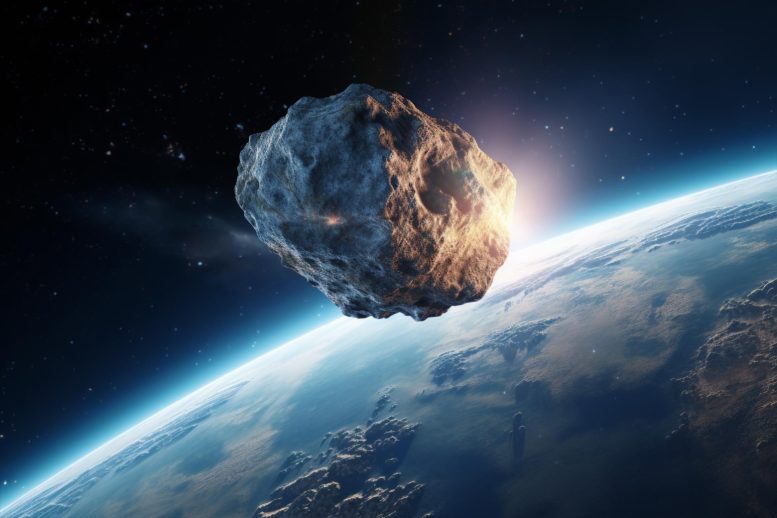
The asteroid discovery algorithm, HelioLinc3D, developed for the Vera C. Rubin Observatory’s upcoming sky survey, has successfully identified its first “potentially hazardous” asteroid, 2022 SF289, demonstrating a promising advancement in near-Earth asteroid detection and marking a significant milestone in data-intensive astronomy. (Artist’s concept.)
HelioLinc3D, a next-generation asteroid discovery algorithm developed for the Vera C. Rubin Observatory’s upcoming sky survey, has identified its first “potentially hazardous” asteroid, 2022 SF289.
An asteroid discovery algorithm — designed to uncover near-Earth asteroids for the Vera C. Rubin Observatory’s upcoming 10-year survey of the night sky — has identified its first “potentially hazardous” asteroid, a term for space rocks in Earth’s vicinity that scientists like to keep an eye on. The roughly 600-foot-long asteroid, designated 2022 SF289, was discovered during a test drive of the algorithm with the ATLAS survey in Hawaii. Finding 2022 SF289, which poses no risk to Earth for the foreseeable future, confirms that the next-generation algorithm, known as HelioLinc3D, can identify near-Earth asteroids with fewer and more dispersed observations than required by today’s methods.
An asteroid discovery algorithm developed for the Vera C. Rubin Observatory’s upcoming Legacy Survey of Space and Time has identified its first “potentially hazardous” asteroid, PHA. PHAs are objects with a potential to make threatening close approaches to the Earth.
“By demonstrating the real-world effectiveness of the software that Rubin will use to look for thousands of yet-unknown potentially hazardous asteroids, the discovery of 2022 SF289 makes us all safer,” said Rubin scientist Ari Heinze, the principal developer of HelioLinc3D and a researcher at the University of Washington.
The solar system is home to tens of millions of rocky bodies ranging from small asteroids not larger than a few feet, to dwarf planets the size of our moon. These objects remain from an era over four billion years ago, when the planets in our system formed and took their present-day positions.
Video showing the orbit of 2022 SF289 (in green) relative to the orbit of Earth (blue) and other planets in the solar system (Venus in orange, Mars in red). Credit: Joachim Moeyens/University of Washington/OpenSpace
Most of these bodies are distant, but a number orbit close to the Earth, and are known as near-Earth objects, or NEOs. The closest of these — those with a trajectory that takes them within about 5 million miles of Earth’s orbit, or about 20 times the distance from Earth to the moon — warrant special attention. Such “potentially hazardous asteroids,” or PHAs, are systematically searched for and monitored to ensure they won’t collide with Earth, a potentially devastating event.
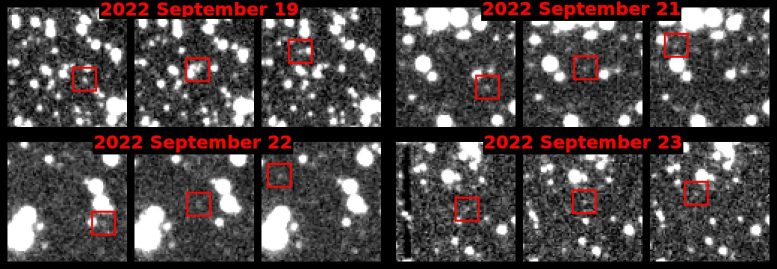
Discovery images from the ATLAS survey, with 2022 SF289 visible in the red boxes. Credit: ATLAS/University of Hawaii Institute for Astronomy/NASA
Scientists search for PHAs using specialized telescope systems like the NASA-funded ATLAS survey, run by a team at the University of Hawaii’s Institute for Astronomy. They do so by taking images of parts of the sky at least four times every night. A discovery is made when they notice a point of light moving unambiguously in a straight line over the image series. Scientists have discovered about 2,350 PHAs using this method, but estimate that at least as many more await discovery.
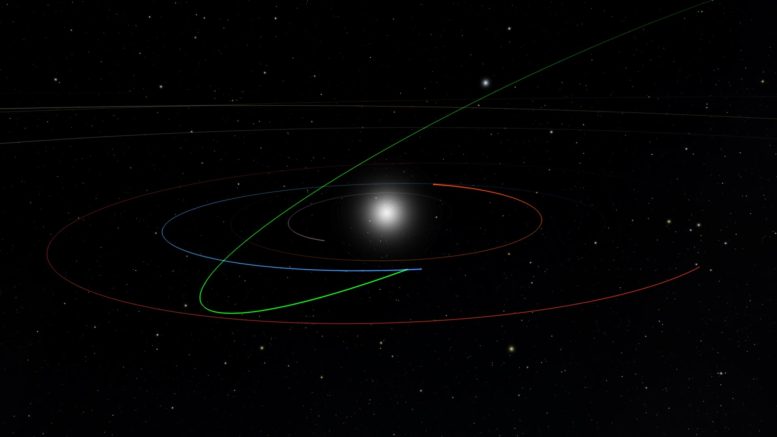
Image showing the orbit of 2022 SF289 (green) at its closest approach to Earth (orbit in blue). Orbits of Venus and Mars are shown in orange and red, respectively. Credit: Joachim Moeyens/University of Washington/OpenSpace
From its peak in the Chilean Andes, the Vera C. Rubin Observatory is set to join the hunt for these objects in early 2025. Funded primarily by the U.S. National Science Foundation and the U.S. Department of Energy, Rubin’s observations will dramatically increase the discovery rate of PHAs. Rubin will scan the sky unprecedentedly quickly with its 8.4-meter mirror and massive 3,200-megapixel camera, visiting spots on the sky twice per night rather than the four times needed by present telescopes. But with this novel observing “cadence,” researchers need a new type of discovery algorithm to reliably spot space rocks.
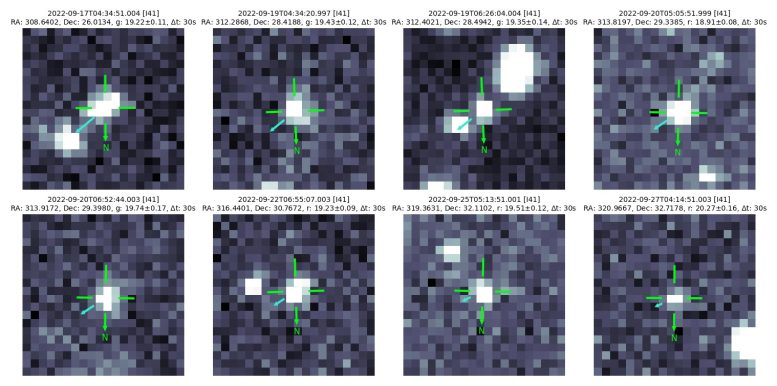
Additional observations of 2022 SF289 captured by the Zwicky Transient Facility survey. Credit: Joachim Moeyens/University of Washington/B612 Asteroid Institute
Rubin’s solar system software team at the University of Washington’s DiRAC Institute has been working to just develop such codes. Working with Smithsonian senior astrophysicist and Harvard University lecturer Matthew Holman, who in 2018 pioneered a new class of heliocentric asteroid search algorithms, Heinze and Siegfried Eggl, a former University of Washington researcher who is now an assistant professor at the University of Illinois at Urbana-Champaign, developed HelioLinc3D: a code that could find asteroids in Rubin’s dataset. With Rubin still under construction, Heinze and Eggl wanted to test HelioLinc3D to see if it could discover a new asteroid in existing data, one with too few observations to be discovered by today’s conventional algorithms.
Video showing the orbit of 2022 SF289 (in green) relative to the orbit of Earth (blue) and other planets in the solar system (Venus in orange, Mars in red). Credit: Joachim Moeyens/University of Washington/OpenSpace
John Tonry and Larry Denneau, lead ATLAS astronomers, offered their data for a test. The Rubin team set HelioLinc3D to search through this data and on July 18, 2023, it spotted its first PHA: 2022 SF289, initially imaged by ATLAS on September 19, 2022 at a distance of 13 million miles from Earth.
In retrospect, ATLAS had observed 2022 SF289 three times on four separate nights, but never the requisite four times on one night to be identified as a new NEO. But these are just the occasions where HelioLinc3D excels: It successfully combined fragments of data from all four nights and made the discovery.
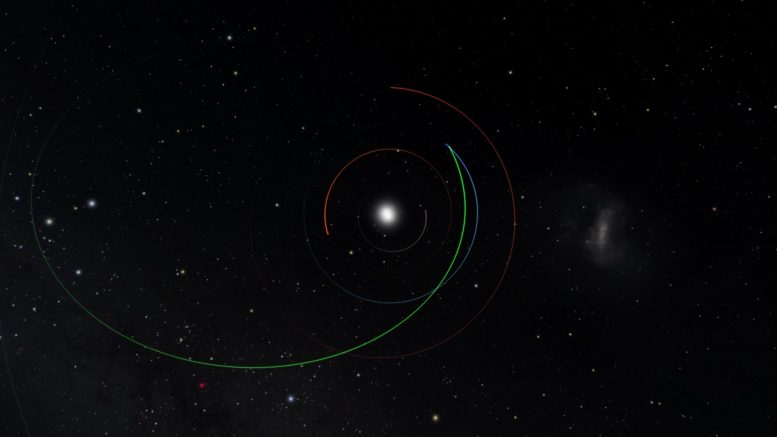
Image showing the orbit of 2022 SF289 (green) at its closest approach to Earth (orbit in blue). Orbits of Venus and Mars are shown in orange and red, respectively. Credit: Joachim Moeyens/University of Washington/OpenSpace
“Any survey will have difficulty discovering objects like 2022 SF289 that are near its sensitivity limit, but HelioLinc3D shows that it is possible to recover these faint objects as long as they are visible over several nights,” said Denneau. “This in effect gives us a ‘bigger, better’ telescope.”
Other surveys had also missed 2022 SF289, because it was passing in front of the rich starfields of the Milky Way. But by now knowing where to look, additional observations from Pan-STARRS and Catalina Sky Survey quickly confirmed the discovery. The team used B612 Asteroid Institute’s ADAM platform to recover further unrecognized observations by the NSF-supported Zwicky Transient Facility telescope.
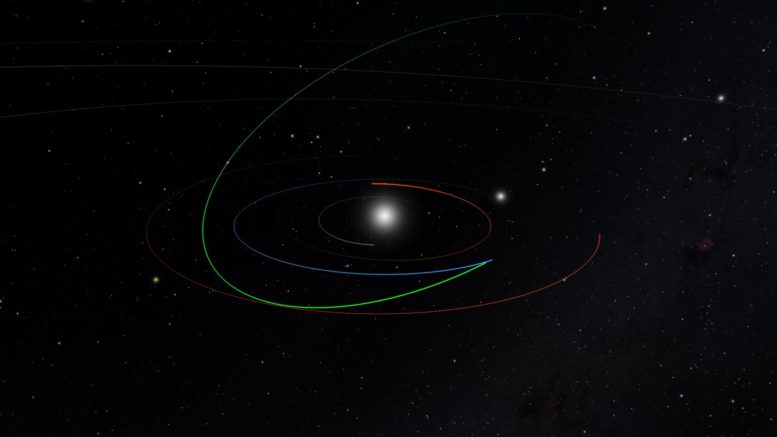
Image showing the orbit of 2022 SF289 (green) at its closest approach to Earth (orbit in blue). Orbits of Venus and Mars are shown in orange and red, respectively. Credit: Joachim Moeyens/University of Washington/OpenSpace
2022 SF289 is classified as an Apollo-type NEO. Its closest approach brings it within 140,000 miles of Earth’s orbit, closer than the moon. Its diameter of 600ft is large enough to be classified as “potentially hazardous.” But despite its proximity, projections indicate that it poses no danger of hitting Earth for the foreseeable future. Its discovery has been announced in the International Astronomical Union’s Minor Planet Electronic Circular MPEC 2023-O26.
Currently, scientists know of 2,350 PHAs but expect there are more than 3,000 yet to be found.
“This is just a small taste of what to expect with the Rubin Observatory in less than two years, when HelioLinc3D will be discovering an object like this every night,” said Rubin scientist Mario Jurić, director of the DiRAC Institute, professor of astronomy at the University of Washington and leader of the team behind HelioLinc3D. “But more broadly, it’s a preview of the coming era of data-intensive astronomy. From HelioLinc3D to AI-assisted codes, the next decade of discovery will be a story of advancement in algorithms as much as in new, large, telescopes.”
Financial support for Rubin Observatory comes from the U.S. National Science Foundation, the U.S. Department of Energy and private funding raised by the LSST Corporation.

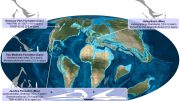
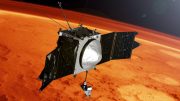

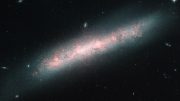


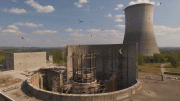
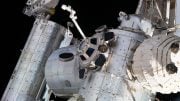
Be the first to comment on "Near-Earth “Potentially Hazardous” Asteroid Discovered: First Triumph for HelioLinc3D Algorithm"